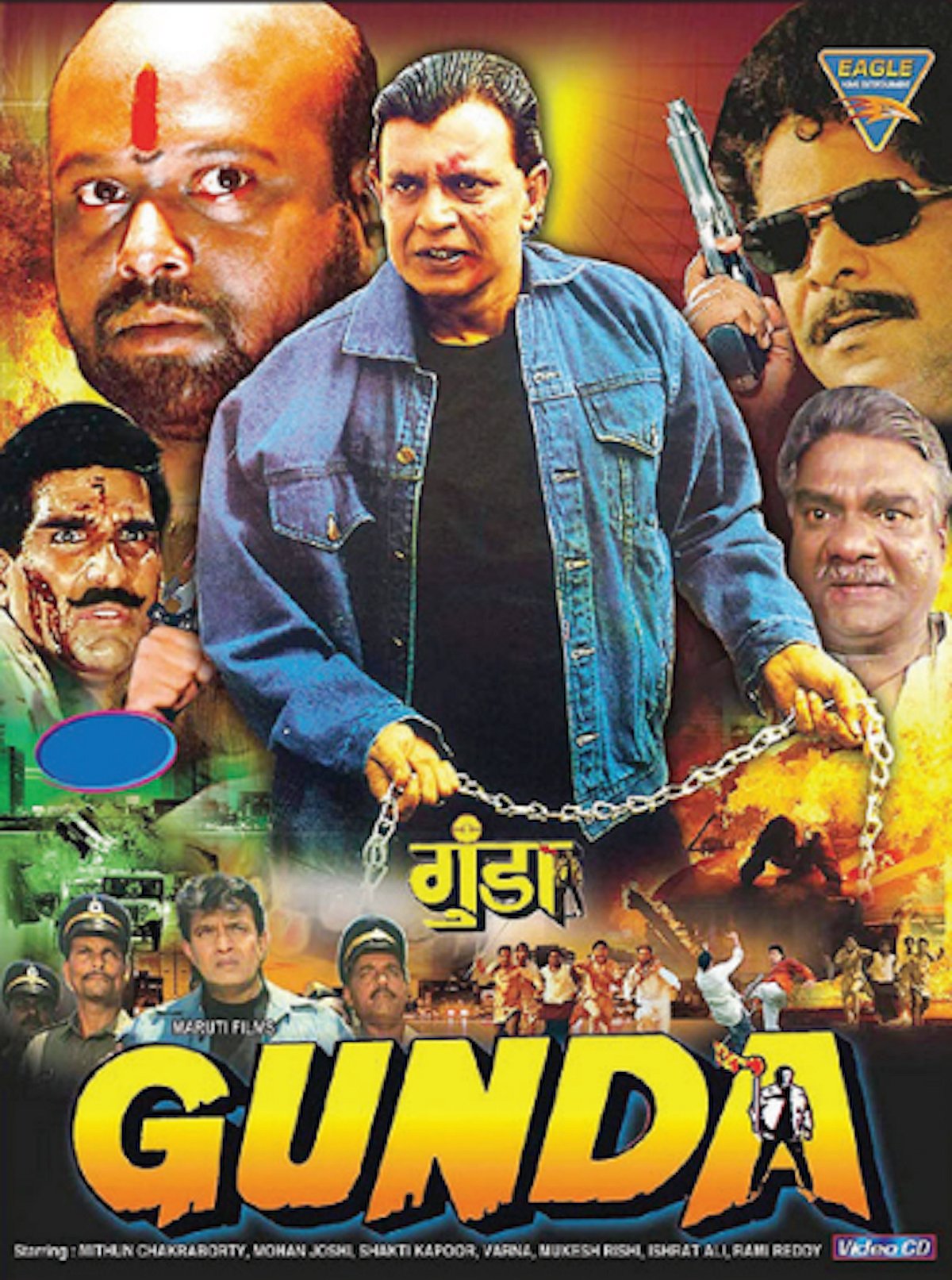Kitsch Nostalgia: Celebrating Bollywood's B-graders
There’s a method in the celebration of “weird side of films”. For example, a group on Facebook is a cult of sorts with Mithun Chakraborty as its patron saint and 'Gunda' as its Bible

Rahul Bhattacharya (name changed) is a struggling writer in Bollywood, hustling and networking for work. The Delhi boy, who grew up on mainstream Hindi cinema of the 90s— with Yash Chopra, Subhash Ghai, Karan Johar, Ram Gopal Verma and Abbas Mustan as his idols—decided to turn to his primary passion in the isolation and idleness of lockdowns and created Bollywoodshitposts account on Instagram to showcase “nonstop entertaining memes from not-so-great films, TV shows through the years”.
Incidentally, shitposting is described by the Financial Times as “ostentatiously inane and contextless content on an online forum or social network with the effect of derailing discussion” and usually takes the form of “photoshopped memes”.
Last week Bollywoodshitposts gave the industry something to smile about amid the “boycott Bollywood” trend on social media with a mocking meme featuring Nawazuddin Siddiqui from Sacred Games as a troll talking about how his daily life is committed to waking up, bathing, “boycotting” and going back to sleep.
The idea behind Rahul’s Insta effort is to platform the “weird side of films”. “Organising this cool content was something I always wanted to do,” says Rahul. What also inspired him was the Mark Hartley documentary Not Quite Hollywood, on the gore, sleaze and kitsch-filled ‘Ozploitation’ cinema of Australia.
Others on the Internet too seem committed to B-grade cinema. Bollylyrix on Twitter and Instagram showcases the worst of words in Bollywood songs. Inspired poetry like 'Koi bane bad, toh main uska bhi dad', from Salman Khan’s Radhe.
And then there is the popular 'I Love Trashy Hindi Movies' group on Facebook, a cult of sorts with Mithun Chakraborty as its patron saint and Gunda as its Bible. The group’s definition of “trashy” is quite simple and straightforward: “Trashy for us is something that has become a cliche or is so bad that it’s really good... white shoes, villains, strange dialogues, weeping moms, catch phrases..... these are some common examples. What it is not is something so boring that it interests no one.”
A cheeky note on the FB page of the private group further adds: “If you love mindless, absurd, B grade, obscure, trashy, and all kinds of Hindi movies, then this is the group for you.
And if you have seen Aatank Hi Aatank/ Dariya Dil/ Free Entry/Zulm Ki Hukumat/ Khuda Meherbaan Toh Gadha Pehlwaan, then I will share Moderator rights with you.”
It was started as a community zone more than 12 years back and has an eclectic mix of members—CEOs, IIM graduates, engineers, film practitioners and more. “The little group of like-minded people acquired a life of its own, started growing bigger with each passing day,” says screenwriter Vaibhav Vishal, one of the early founder members and administrators of the group.
Beyond the purview of these pages, sites and handles, there are also individuals doing their own assiduous research, collation and archiving of popular culture. Pragyan Mohanty’s thread on Twitter on the varied newspapers featured within popular films is meticulous and methodical, a veritable revelation and ready resource for film studies.



Aditi Sen, Associate Professor at Queen's University, Kingston, runs two tumblrs, one on the maps and another on the variety of cakes featured in Hindi films. It stems from her close interest in objects and props featured in films. Having access to nothing but Bollywood while growing up (with a few Rays and Uttam Kumar films) she developed great affinity for B grade cinema. Films like Babu, Paapi Pet Ka Sawaal Hai, the 'Daaku' genre and the shoddy horror and monster movies, like the Ramsay productions and Harinam Singh’s Khooni Dracula.
There’s a method in the celebration of madness in movies. There’s a discipline in updating content regularly and close monitoring of it so that it adheres to shitposting and “trashy” standards. It is not just about posting a random picture or poster but with caption, description details, trivia and explanation. And it has led to content curation that the groups are proud of.
At the root of all the fun is the intent of celebrating a certain kind of cinema which otherwise would never make it in film history. “It’s about bringing credibility and respect to a closed chapter of cinema history,” says Rahul.
What was it that stood out about these B Graders? "There are fun ideas in those films. The passion that B-grade filmmakers put in their work was commendable," says Rahul. That passion seems to have become rare in the systemised, corporate cinema culture now. Things have become “plain boring”. For Rahul Gunda is a great Tarantino film. “The execution might be terrible, but Tarantino could have created magic with those characters,” he says.
Mithun, and more recently Bobby Deol, have become cult icons because of the bad films. "Gunda was the big turning point, the transformative cult film," says Aditi. In fact, Mithun’s “Ooty” movies of the 90s (shot in single schedules after he moved to the hill station to manage his hotel business) were all the same—about him killing a bunch of goons. “The challenge was to think different each time,” says Rahul. And they managed. Vaibhav thinks films like Chandal and Jallad are brilliant.
Aditi likes the fun and ideas exchange but feels a big gap in this online celebration. It is still not about mass culture or mass engagement in that it doesn’t include the actual audience for the film on ground. Instead, it’s about appropriation of an aesthetic from the masses and looking at it with an urban lens. She wonders: “There might be laughter in this but is there empathy?”
(This article was first published in National Herald on Sunday.)
Follow us on: Facebook, Twitter, Google News, Instagram
Join our official telegram channel (@nationalherald) and stay updated with the latest headlines